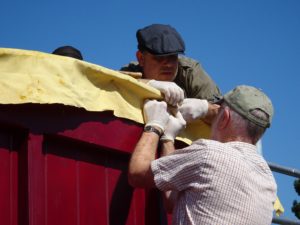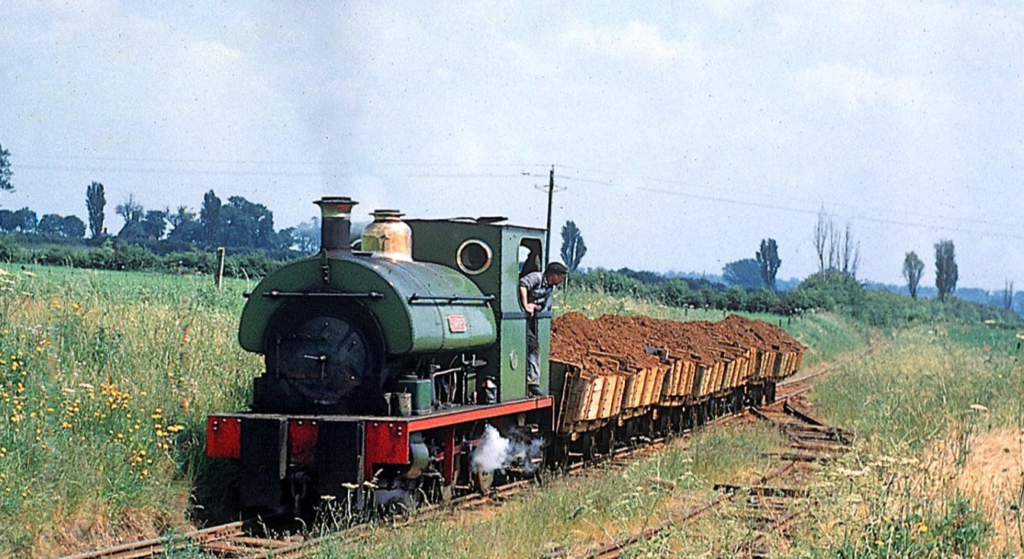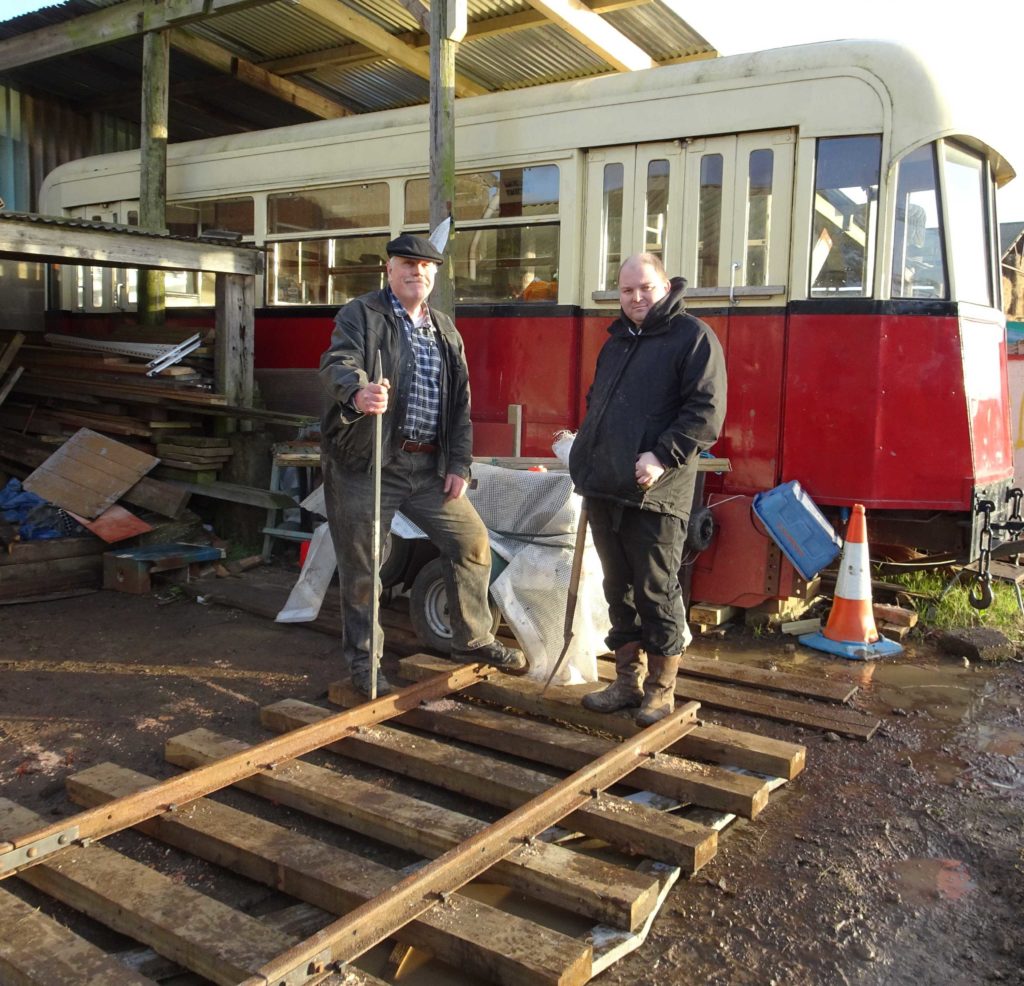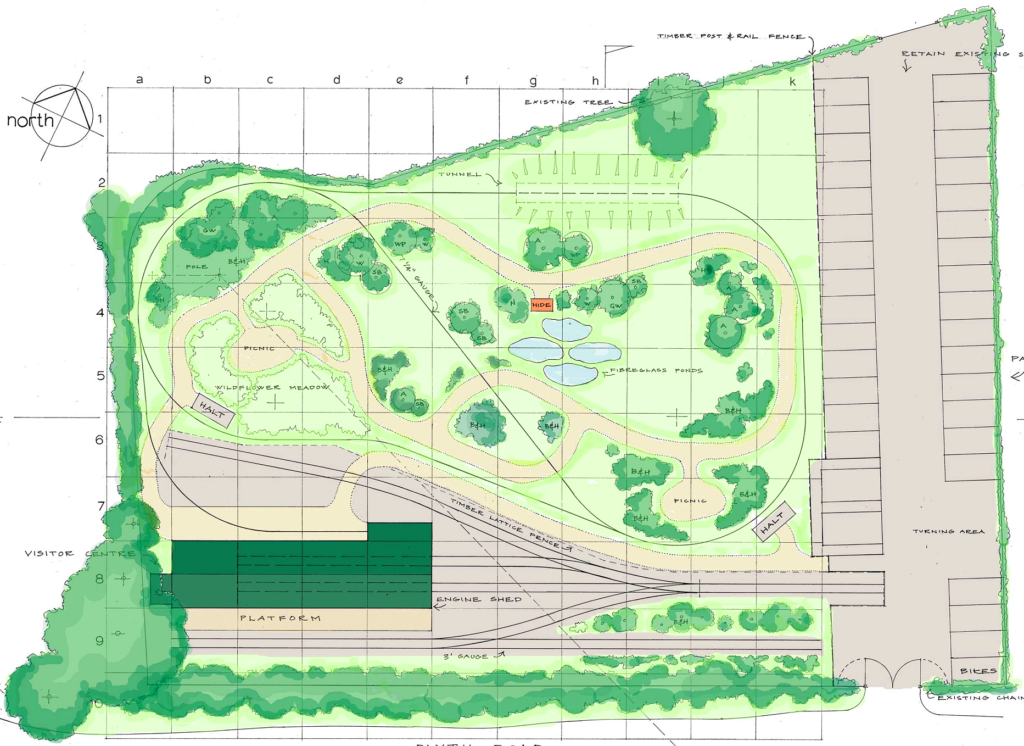The Trust confidentially expects 2017 to be the breakthrough year to
begin the restoration of the Southwold Railway. 2016 was a mixed year,
with another disappointment at Wenhaston on the planning front well
balanced by the receipt of our first national award: the trackbed is now
clear, fenced, well-drained, and has a substantial piece of
demonstration temporary track laid using part-original material. This is
the first three-foot-gauge track to be relaid on the 1879 trackbed
since closure in 1929 and scrapping in 1942. The frontage has also been
fenced to match the original level crossing and station entrance, and
this work has received many plaudits for its quality of construction.
Meanwhile, two elements of the Heritage Train Project – Covered Van 40,
and Open Wagon 41 – were both worked on (the van by SOLD of Lowestoft,
and the wagon by Trust volunteers) to the

point where we can be confident that both will be completed this year. As far as we know, no-one has ever reproduced any nineteenth-century narrow gauge freight stock on this gauge, at least in England, with all design work having to be done from photos (although the EATM have been very helpful with providing access to the similar Van 14). The design and manufacture (by Peggs of Aldeburgh) of the complex sliding door and hinged side mechanisms for these wagons has been a longish job, but is now complete.
The Trust has been very successful in getting our message out there – in the social media, in the press (local and national), and when kindly invited to other organisations’ shows and open days: another well-attended Open Weekend at Wenhaston was also held, and included the inauguration of the 7¼” Blyth Valley Light Railway, to the great pleasure of visitors and members.
Both of the most important events in the history of the Trust happened in 2016, and will come to fruition in 2017. Firstly, we gained full planning permission for the Southwold Project, and are, as you read this, within a few pounds of raising the funding to buy the one acre of land to make this happen.
The 22 chains (in two gauges) of track here, with the visitor centre, museum, running shed, café, shop, and nature reserve, will provide – for the first time – a permanent base for the SRT, which, situated as it is only a few metres from the trackbed, and within sight of the original station in Southwold, forms a perfect jumping-off point for the restoration of the entire railway. The generosity of our members, and investment by the Trust itself, has almost brought us to the point of land purchased – but of course there will be a need for a substantial further input of funds to build the track, infrastructure, building, and landscaping. We hope that the railway enthusiast community will be willing to help with this, and lay the foundation of the restoration of this unique railway – after almost 88 years. You can donate on this website on our page about Southwold Station.

Secondly, thanks to the good offices and support of the Amberley Museum Heritage Trust, SRT became owners of 1913 Peckett 0-6-0ST “Scaldwell” in 2016, and we hope that it will arrive in Suffolk by spring. Again, Trust members and volunteers have provided funding for the transport, but naturally there will be a need for further funding, to restore this valuable locomotive to steam so that it can run on the short demonstration track when laid in Southwold,and later on longer parts of the SR. Donations are very welcome, and can be provided on this website.
http://www.southwoldrailway.co.uk/scaldwell/

Such is our confidence in the appeal for the Southwold Project being successful that we are now actively looking for rail. “Scaldwell” is heavier thanour own Sharpies, so we need to increase rail weight a little. If any reader knows of any F/B rail of 35lb, 40lb (the ideal), 45lb or 50lb per yard – or any points or point components (1 in 8) – please contact the Trust via this website. It doesn’t have to be perfect, but does need to be usable! We could of course buy new – but with the envisaged low speeds here, that seems unnecessarily expensive, unless there’s no choice. The main line, however, when built, will be new 40lb F/B attached to slightly heavier sleepers (200mm x 100mm) with track screws and clips – so it will still give a very similar impression to original SR track, while being more robust.

